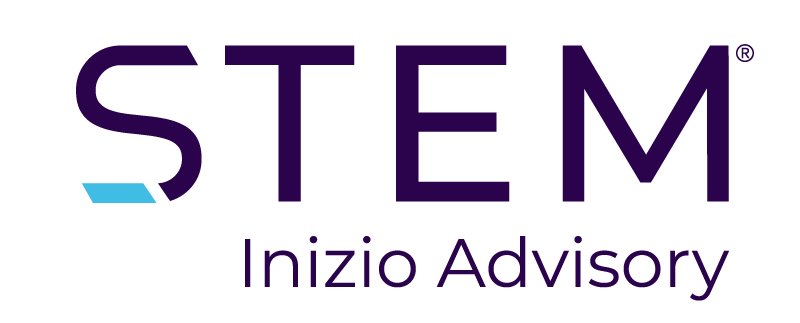Are your commercial teams fully aligned with your strategy?
Authored by: Dermot Kenny, CEO
Whether you’re launching a new drug or working to revive an existing product, STEM CEO Dermot Kenny explains how a better understanding of your teams’ interactions with target prescribers can help you accelerate brand performance and improve patient outcomes.
As a pharma leader, you know only too well how much time, money, and effort it takes to develop and bring a product to launch – and create a brand and marketing strategy to support it.
But all that hard work can be seriously undermined if your strategy isn’t thoroughly understood by your frontline teams, or they’re not properly putting it into practice. Time and again, the first months of a launch define the overall product lifecycle – so can you really afford to have commercial teams get started, without being fully aligned and firing on all cylinders?
Even then, seemingly healthy starts can mask a multitude of issues and missed opportunities. While bottom-line sales and profit data might look good, it rarely gives you the entire picture. There might be a reason sales aren’t even stronger, you might be missing a problem that leads to premature tail-off, or your brand might be doing exceptionally well in one territory but falling short in another. Understanding what’s happening – and why – is crucial.
But getting a clear picture can be a challenge. It’s not easy to determine whether your teams are making the right connections with healthcare providers, especially as market demands and expectations shift – or new competitors emerge. Even if you know how well you’re doing against your plans, how do you keep hitting the right targets when the goalposts are constantly moving?
Analyzing your teams, in action
The only way to know for sure is to look at your teams, analyzing how they’re performing in alignment with your strategy and, importantly, industry standards. It’s about understanding what a good interaction looks like, measuring individual and team performance against specific criteria, and making actionable plans that enable you to maximize your impact.
At STEM, we specialize in observing and measuring the interactions between commercial teams and healthcare professionals. In fact, over the last 15 years, we’ve built the largest benchmark database in the industry, with hundreds of thousands of detailed observations collected from thousands of projects across the world, spanning virtually every major pharma company. We know what it takes to make an interaction successful, but more importantly, how to channel the insights we gain into stronger performance for our clients, whatever their goals.
Our advice is always to make sure your projects clearly defined and has a hypothesis that aligns directly with your leadership. It’s something we regularly help our clients do, interviewing their leadership teams to find out what’s important to them, what they’re trying to achieve with their strategy and how they expect their teams to execute it in the field. Whatever your project goals, that up-front work is never wasted, giving you a strong foundation for the work ahead.
Once you’ve got that clarity of vision, it’s important to monitor what’s really happening as you roll out:
- Measure the success of your interactions.
- Check whether team members are covering your key messages.
- Know whether they’re getting a good selling outcome.
- Identify any gaps in the information they’re giving.
- Make sure they don’t miss key cues from HCPs
- Track those clear commitments from prescribers.
These are all vital pieces of the picture, and elements we help our own clients understand, by acting as specialist, silent in-field observers.
Capitalizing on every opportunity
What we do – and what we help every pharma team to do – isn’t just about collating data, seeing where teams are going wrong or spotting strategic disconnects. It’s about actively interrogating the information you gather and using it to identify opportunities to constantly improve. Because no matter how successful you are, you can always be better.
So, once you’ve collected data from the field, it’s about benchmarking, highlighting what your teams are doing well and identifying clear, actionable plans for improvement. Those might include better training, stronger management, clearer internal communication – or even refocusing the marketing plan itself. At STEM, we help our clients plan and implement those changes, then return to measure their impact, empowering teams to hit the next level, and the next.
Bringing more teams on board
It’s not just commercial teams that significantly benefit from this approach. Today, we use it to help clients understand and improve the performance of a whole range of departments, from MSLs and medical teams to first-line managers and account managers. We’ve seen firsthand how it can strengthen those specific areas – and empower teams to work together, company-wide, in a holistic, successful way.
We also encourage clients to look at how well their teams are orchestrating and deploying digital and omnichannel strategies. Do they really understand the tools they’ve been given? And are they using them at the right time, in the right scenarios, to really drive impact?
There are myriad challenges to overcome if you want to give your brand the best chance of success. Don’t let strategic misalignment or poor performing teams be among them. Take the time to build a deeper understanding of your teams in action and use the powerful insights you gain to plan for an even stronger, more successful future.
STEM partners, consults, and advises pharma and life science companies using proprietary methodology to establish a depth of data-driven evidence they can’t find anywhere else.

Related reading.
Give your product the best chance of success
That old saying about never getting a second chance to make a first impression? It’s true about so many things in life. Job interviews. Meeting with a
Read moreTips for successful virtual interactions
The Covid-19 pandemic has forced many businesses to rethink how they reach their customers – and pharmaceutical companies are no different. For many,
Read moreHow ready are you for virtual success?
No one could have predicted a year ago the world we live in now. The sudden and unprecedented challenge we face from Covid-19 means organizations have
Read more